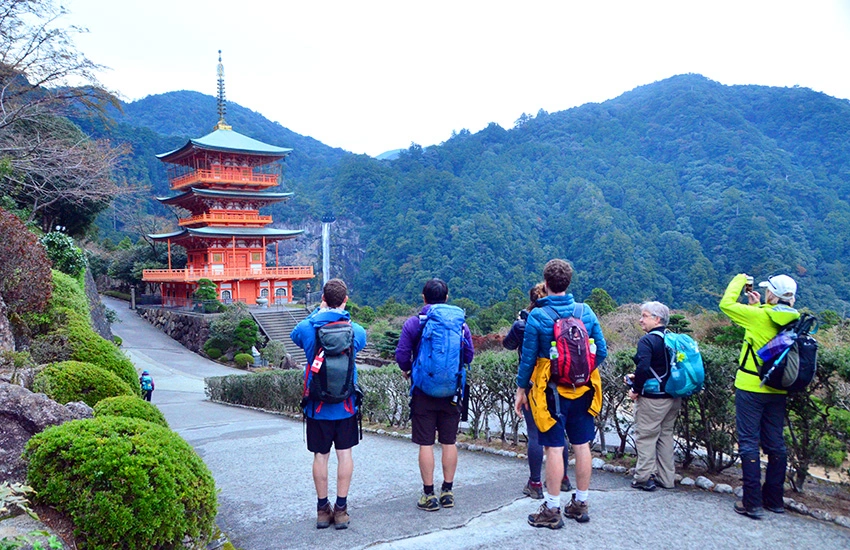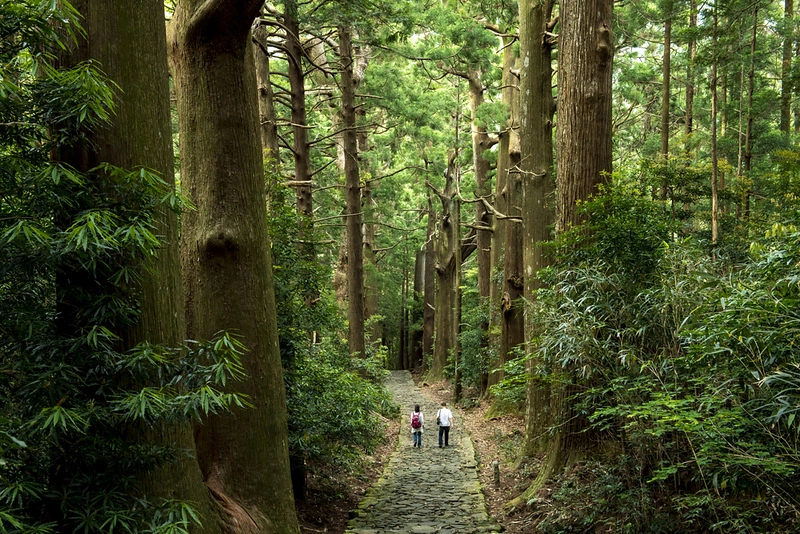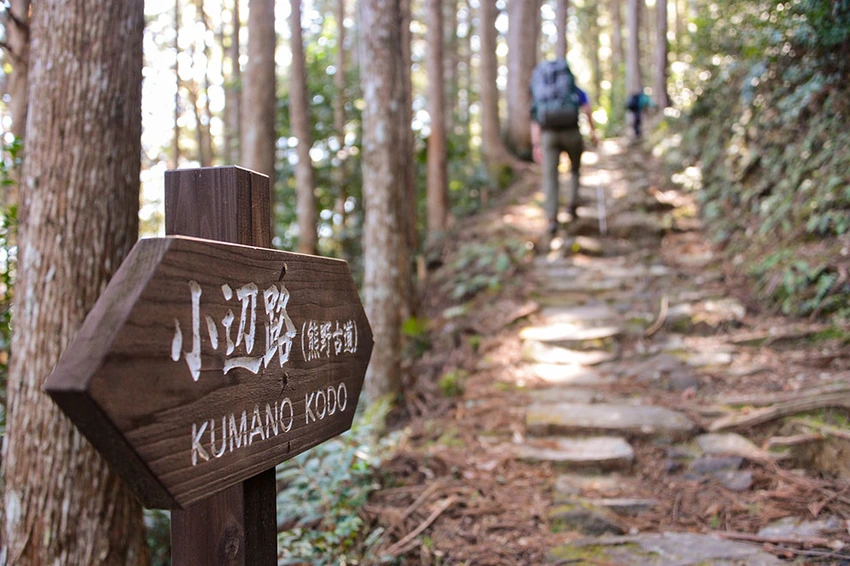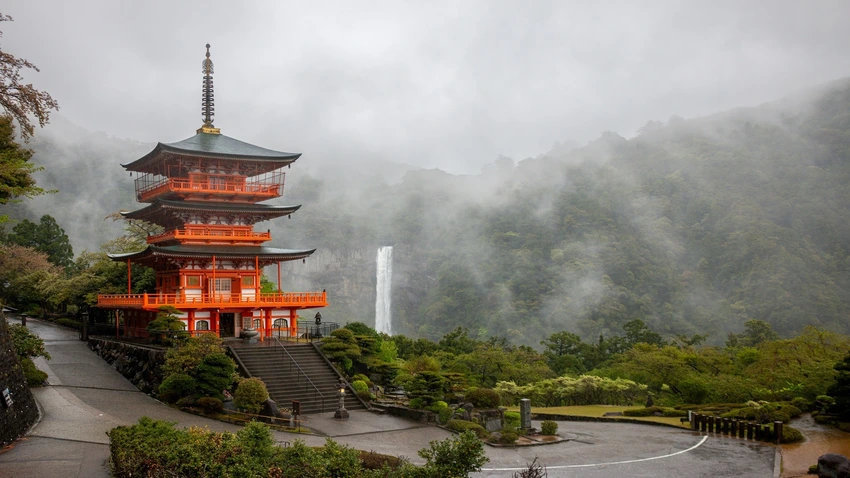
The Kumano Kodo Trail is one of Japan’s most sacred and scenic pilgrimage routes, offering a blend of natural beauty, rich history, and spiritual significance. A UNESCO World Heritage site, the trail connects the sacred Kumano Sanzan shrines and winds through the lush mountains of the Kii Peninsula. Whether you’re walking the Nakahechi Trail, hiking to the Kumano Hongu Taisha, or exploring the cultural heart of Japan, the Kumano Kodo offers an unforgettable experience.

Content
What is the Kumano Kodo Trail?
The Kumano Kodo is an ancient network of pilgrimage routes located on the Kii Peninsula in Japan. As a major route for Shinto practitioners and Buddhist pilgrims, it has been used for centuries to connect three sacred shrines: Kumano Hongu Taisha, Kumano Nachi Taisha, and Kumano Hayatama Taisha. The trail has been honored as a UNESCO World Heritage site due to its profound cultural, spiritual, and historical significance.
The Kumano Kodo offers a unique combination of hiking, history, spirituality, and nature, making it a must-visit destination for travelers seeking a deeper connection with Japan’s traditions. From ancient cedar forests to towering waterfalls like Nachi Falls, the Kumano Kodo is more than just a trail – it’s a journey of self-discovery and connection with nature.
The Major Trails of Kumano Kodo
Nakahechi Trail: The Most Popular Route
The Nakahechi Trail is the most popular and accessible route for those looking to experience the Kumano Kodo. Known for its moderate difficulty and relatively well-maintained path, it offers a combination of historical landmarks and breathtaking scenery. The trail leads to the Kumano Hongu Taisha, one of the Kumano Sanzan shrines, and offers incredible views of the surrounding mountains and valleys.

The Nakahechi Trail is perfect for first-time pilgrims or hikers who want to explore the Kumano Kodo without extreme physical challenges. The trail length is around 30 kilometers, making it manageable for those with a moderate fitness level. Along the way, pilgrims will encounter quaint villages, traditional minshuku (guesthouses), and peaceful sections of forest perfect for forest bathing or Shinrin-yoku.
Kohechi Trail: A Spiritual Challenge
The Kohechi Trail offers a more demanding and spiritual journey. It connects the sacred Koyasan, home to a significant Buddhist temple, to the Kumano Sanzan shrines. The trail is challenging, with steep ascents and rugged terrain, making it ideal for those seeking a more physically demanding pilgrimage.

Hikers on the Kohechi Trail will be rewarded with stunning panoramic views of the surrounding mountains and forests. Along the route, you’ll experience the spiritual atmosphere of Shugendo, a unique religion that combines Shinto and Buddhism practices. The Kohechi Trail offers a deeper, more spiritual experience for those looking to reflect and connect with Japan’s spiritual heritage.
Iseji Route: A Journey from Ise Shrine to Kumano
For those interested in a longer journey, the Iseji Route connects the famous Ise Shrine to the Kumano Kodo. This trail stretches across both coastlines and inland forests, showcasing a variety of landscapes, from lush greenery to coastal views. The route is perfect for those who want to experience both the sacred nature of Kumano and the grandeur of the Ise Shrine, one of Japan’s most significant religious sites.
Spiritual Significance of the Kumano Kodo

The Three Kumano Sanzan Shrines
The Kumano Kodo is deeply intertwined with Japan’s religious history, particularly Shinto and Buddhism. At the heart of the pilgrimage are the three shrines known as the Kumano Sanzan. Each shrine holds significant spiritual meaning for pilgrims.
- Kumano Hongu Taisha: This is the most visited shrine, known for its iconic Otorii gate that stands at the entrance to the shrine. It’s an important pilgrimage site for those following the Shinto faith.
- Kumano Nachi Taisha: Located near the impressive Nachi Falls, this shrine combines both Shinto and Buddhism elements. The majestic waterfall, one of Japan’s tallest, is an important symbol of the sacred power of nature.
- Kumano Hayatama Taisha: This shrine is a peaceful retreat nestled among the trees, providing pilgrims with a moment of serenity and reflection.
Shinto Pilgrimage Practices
The Kumano Kodo trail holds great importance in Shinto practices, where nature is revered as sacred. The concept of Kami (spirits) is central to Shintoism, and the Kumano Kodo connects pilgrims to these spiritual forces, allowing them to walk in the footsteps of centuries of worshippers. The trail represents a journey of inner transformation, through both physical exertion and spiritual reflection.
Nature and Scenic Views Along the Kumano Kodo
Shinrin-yoku (Forest Bathing)
One of the unique features of the Kumano Kodo Trail is its emphasis on nature and spirituality. The practice of Shinrin-yoku, or forest bathing, is a major part of the journey. Hiking through the ancient cedar forests of Kumano Kodo allows pilgrims to engage with nature on a deep, meditative level. Surrounded by towering trees, fresh mountain air, and tranquil streams, visitors can experience the healing power of Japan’s natural environment.
Kumano Kodo Waterfalls and Natural Landscapes
The Kumano Kodo is home to some of Japan’s most breathtaking natural landscapes, including Nachi Falls, a towering waterfall that plunges over 130 meters. The Nachi Falls trail is a popular segment of the Kumano Kodo, and offers a majestic view of nature’s grandeur. Pilgrims can also enjoy hiking through diverse terrains, including mountain ridges, valleys, and riverside paths, each offering unique experiences.
Planning Your Kumano Kodo Journey
Best Time to Visit Kumano Kodo
The best time to visit Kumano Kodo is during the spring and autumn months, when temperatures are mild, and the foliage is at its most vibrant. The autumn colors in the forest are a particularly stunning sight, with the cedar trees turning brilliant shades of red and orange. The summer months can be hot and humid, especially in the lower sections of the trail.
Kumano Kodo Trail Difficulty
While some sections of the Kumano Kodo are relatively easy, others can be challenging. The Nakahechi Trail is ideal for beginners, with moderate inclines and well-maintained paths. The Kohechi Trail, however, is for seasoned hikers who are comfortable with steep climbs and rugged terrain. It is important to choose a route that aligns with your fitness level and hiking experience.
Accommodation on the Trail
There are various accommodation options along the Kumano Kodo, from traditional minshuku (guesthouses) to ryokan (Japanese inns), where travelers can enjoy authentic meals and cultural experiences. Luggage forwarding services are also available, allowing you to travel lighter and focus on your journey.
Travel Tips for Kumano Kodo Pilgrims
How to Get to Kumano Kodo
The easiest way to get to the Kumano Kodo is to fly into Osaka or Kyoto and take a train to the Kii Peninsula. From there, you can use public transportation or hire a local guide to reach the trailheads.
Self-Guided vs Guided Tours
Both self-guided tours and guided tours are available, depending on your preferences. A guided tour is ideal for those who want to delve deeper into the cultural and spiritual significance of the trail, while a self-guided tour offers more flexibility and independence.
Conclusion
The Kumano Kodo Trail is an unforgettable journey through Japan’s spiritual heartland. With its combination of rich history, sacred shrines, breathtaking landscapes, and deep spiritual significance, the Kumano Kodo offers an enriching experience for hikers, pilgrims, and nature lovers alike. Whether you are walking the Nakahechi Trail or challenging yourself with the Kohechi Trail, the Kumano Kodo invites you to connect with Japan’s profound cultural and spiritual heritage. Embark on this transformative journey and let the Kumano Kodo leave a lasting impact on your soul.
FAQs
What is the best Kumano Kodo Trail route for beginners?
The Nakahechi Trail is ideal for beginners, offering a well-marked path, moderate difficulty, and access to major sites like Kumano Hongu Taisha.
How long does it take to complete the Kumano Kodo Trail?
It depends on the route. The popular Nakahechi Trail usually takes 3–5 days to complete, while shorter sections can be finished in a day.

An avid traveler, Douglas Scott has been to over 50 countries. He has an extensive background in tourism and hospitality management, along with a degree in Hospitality Management from the University of Nevada Las Vegas. Douglas is very knowledgeable about travel-related topics – they are always up to date on the latest deals for flights, hotels, and other adventures around the world.











